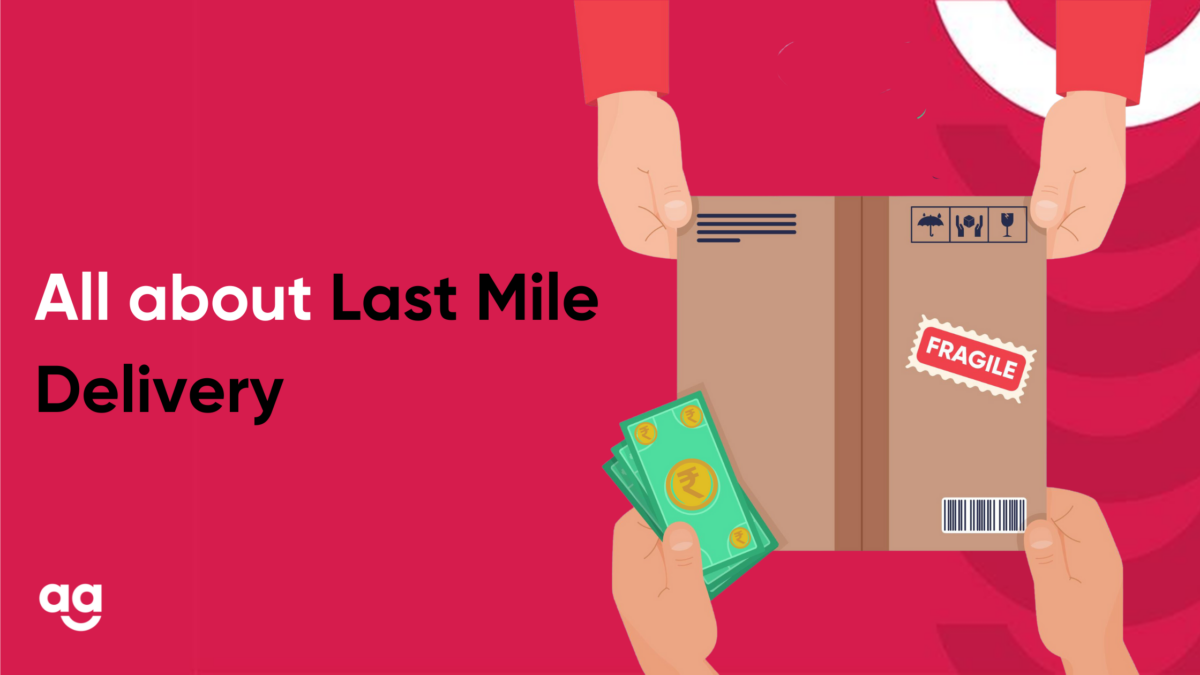Introduction
Rapid fulfillment and distribution are no longer just “nice to have” options, but rather standards in every online shopping experience as customers turn more and more to eCommerce for all of their buying needs. It needs to be a top focus if logistics businesses and their retail partners want to stand a chance against the existing marketplace giants.
As a result, companies are scrambling to create novel technologies and use test-driven supply chain models in an effort to boost package volume, speed up delivery, and please customers—all while attempting to reduce costs. However the same-day, final mile delivery is one of the major costs for eCommerce businesses.
What is Last Mile Delivery?
The last mile of the delivery process, or the movement of a product from a warehouse shelf to the customer’s doorstep, is referred to as the “last mile of delivery.”
Even though the last mile delivery is the most costly and time-consuming step in the shipping process, it is crucial since it is the foundation for customer happiness.
9 Steps in Last Mile Delivery
- Order Processing: Once an order is placed by a customer, it is processed by the seller or e-commerce platform. This involves verifying the order details, preparing the product for shipment, and generating necessary documentation.
- Sorting and Routing: The packages are sorted based on their destination and delivery route. This step ensures efficient and optimized delivery schedules, minimizing transit time and maximizing delivery density.
- Warehouse Pickup: The delivery personnel or courier service picks up the sorted packages from the warehouse or distribution center. They may use various modes of transportation, including vans, bikes, scooters, or even on-foot delivery in densely populated areas.
- Tracking and Real-Time Updates: Throughout the delivery process, customers are provided with tracking information, allowing them to monitor the progress of their package. Real-time updates help manage customer expectations and provide transparency.
- Route Optimization: Delivery routes are optimized to ensure the most efficient and timely deliveries. Advanced logistics software and algorithms are often utilized to minimize travel time and fuel consumption, taking into account traffic patterns and other variables.
- Delivery Attempt: The delivery personnel makes an attempt to deliver the package to the customer’s designated address. They may follow specific instructions provided by the customer, such as leaving the package with a neighbor or at a specified location if the recipient is unavailable.
- Delivery Confirmation: Once the package is successfully delivered, the recipient acknowledges the receipt, either by signing a delivery confirmation or through digital confirmation methods like mobile apps or SMS.
- Returns and Exchanges: In case of returns or exchanges, the last-mile delivery process also involves handling reverse logistics. This includes collecting the package from the customer’s location and ensuring it is returned to the appropriate destination, such as the seller or a designated returns center.
- Customer Feedback and Support: Feedback from customers regarding the delivery experience is valuable for continuous improvement. Customer support channels should be available to address any issues or queries related to the delivery process.
What is a Last Mile Delivery Problem
By now, it should be clear that maintaining client satisfaction depends on an effective last mile delivery procedure.
The paradox is that although buyers desire free and quick shipment, it also happens to be the most costly and time-consuming step in the shipping process.
However, given how simple it is for customers to discover a substitute store, businesses cannot afford to let them down. So, businesses are responsible for covering those expenses. That, then, is the issue with last-mile delivery.
The cost of last-mile shipping can make up 53% of the entire cost of a cargo. Normally, companies bear roughly 25% of those expenses on their own, but this percentage is rising as the cost of inefficient supply chains rises.
Wrapping Up
Assuring a prompt and effective delivery to the final customer is the largest problem with last-mile deliveries. Significant obstacles include things like traffic congestion, address complexity, delivery limitations, and client availability. Effective communication and cutting-edge logistics technology are required to overcome these obstacles.
Success in the cut-throat eCommerce environment depends on adapting and developing new delivery tactics. Businesses may deliver excellent client experiences and foster loyalty by solving these issues.







 Shipping
Shipping







